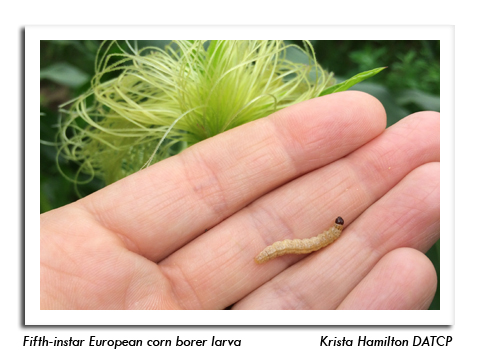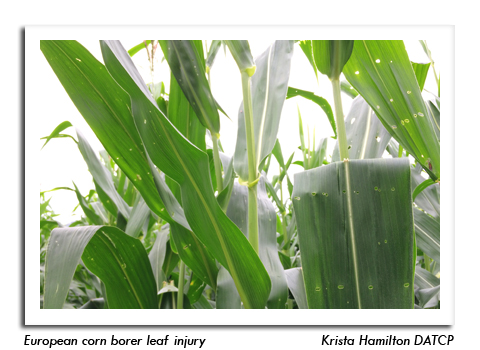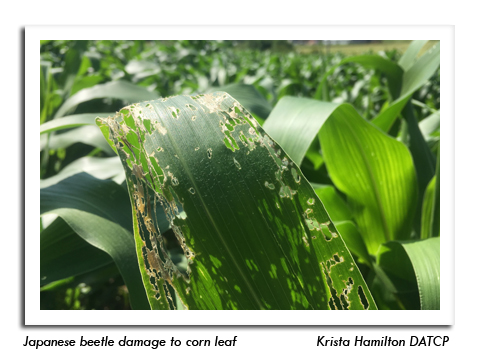
 |
|
|
Corn
Volume 62 Number 12 Date 07/20/2017 WESTERN BEAN CUTWORM - Moth emergence accelerated during the past week and has peaked in some areas. According to the degree day model for this insect, 25-50% of the adult population has emerged across the southern half of the state, while the annual flight is beginning near Wausau and in the northern counties. The DATCP network of pheromone traps registered a total of 237 moths from July 13-19, compared to 98 moths during the previous week. The current state cumulative count of 440 moths in 69 traps is much lower than the 701 moths captured in 72 traps by the same time last season. Oviposition on corn is increasing as the moth flight peaks. Scouting should continue in the week ahead. EUROPEAN CORN BORER - Surveys of 43 sites this week found only two significant infestations affecting 56% and 96% of corn plants in Monroe and Vernon counties. Fifth-instar larvae and pupae were the predominant developmental stages in the southern and west-central areas. Larvae in eastern Wisconsin have reached the intermediate third instar and are beginning to bore into the midribs of corn leaves. The treatment window for the second larval generation has opened near Beloit, La Crosse and other advanced locations where 1,550 degree days (modified base 50°F) have accumulated, and will remain open until 2,100 degree days are surpassed. JAPANESE BEETLE - Beetles are prevalent in low to moderate numbers in corn. DATCP surveys indicate that counts range from 3-50 beetles per 100 plants and are well below the economic threshold of three or more beetles per ear, when silks are being clipped to ½ inch during pollination. Infestations are generally limited to the field margins. Beetles are expected to become more numerous and damaging when silks are more widely available. Scouting several areas in the field interior, in addition to field edges where beetles are usually concentrated, is suggested for corn that has reached the silking stage. -- Krista Hamilton, DATCP Entomologist 





|
|
|